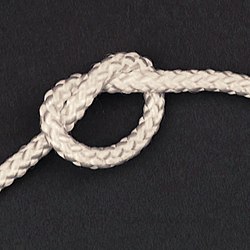Difference between revisions of "Translations:AY Honors/Knitting/Answer Key/104/en"
From Pathfinder Wiki
(Importing a new version from external source) |
(Importing a new version from external source) |
||
| Line 2: | Line 2: | ||
<!-- 4. Show how to join on a new ball of yarn. --> | <!-- 4. Show how to join on a new ball of yarn. --> | ||
A new ball of yarn is attached to the working yarn with a simple overhand knot. This knot serves to hold the new yarn in place until a length of it has been knitted into the fabric. The end of both the old yarn and the new yarn are then trimmed and woven in. | A new ball of yarn is attached to the working yarn with a simple overhand knot. This knot serves to hold the new yarn in place until a length of it has been knitted into the fabric. The end of both the old yarn and the new yarn are then trimmed and woven in. | ||
| − | {{: | + | {{:AY Honors/Knot/Overhand}} |
Latest revision as of 21:35, 17 September 2021
A new ball of yarn is attached to the working yarn with a simple overhand knot. This knot serves to hold the new yarn in place until a length of it has been knitted into the fabric. The end of both the old yarn and the new yarn are then trimmed and woven in.
| Tying the Overhand Knot |
|---|
|
Use: one of the most fundamental knots and forms the basis of many others including the simple noose, overhand loop, angler's loop, reef knot, fisherman's knot and water knot. The overhand knot is very secure, and can jam badly, so only use if you want a permanent knot. It is often used to prevent the end of a rope or string from unraveling.
|


